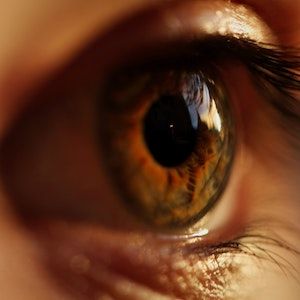Article
Multiple Genetic Variants Likely Underlie Early Onset Drusen Maculopathy
Author(s):
Whole genome sequencing suggests both common and rare variants contribute to early onset drusen maculopathy.

In what investigators characterized as the first study to use whole genome sequencing (WGS) in a large cohort of patients with early onset drusen maculopathy (EODM), both common and rare genetic variants are implicated, and the condition appears more likely an early manifestation of age-related macular degeneration (AMD) than a separate disease entity.
"(The study) allowed for the evaluation of both common and rare variants, and revealed insights into biological disease pathways that may contribute to EODM," wrote Anita de Breuk, MD, Department of Ophthalmology, Donders Institute for Brain, Cognition and Behavior, Radboud University Medical Center, Nijmegen, The Netherlands, and colleagues.
Although environmental factors could contribute to EODM, de Breuk and colleagues considered the early manifestation an indicator that genetic factors play a prominent role. They suspected, in particular, rare and highly penetrant variants for the early appearance of AMD characteristics.
To examine the possible contribution of common AMD-associated variants and identify potential disease-causing rare variants, the investigators identified a population of 90 unrelated patients with EODM, all but 1 drawn from the European Genetic Database (EUGENDA). The criteria included any sign of age-related maculopathy diagnosed ≤55 years of age, or severe signs of AMD diagnosed between 56 and 65 years of age.
From this population, the study cohort was constituted with 49 patients having no rare, potential causative variants in the complement genes CFH, CFI, C3, C9 and CFB. A case-control cohort to reference the genetic risk score (GRS) distribution included 925 individuals without AMD ≥65 years of age, 577 early/intermediate AMD patients, and 1155 advanced AMD patients.
WGS was performed in all participants, and 52 variants previously associated with AMD were extracted from the dataset. The investigators calculated an overall GRS which included all 52 variants; a complement GRS which included 19/52 complement-related variants; and a lipid GRS including 7/52 lipid-related variants. Multiple filtering steps were applied to identify potential disease-causing variants in the EODM patients.
de Breuk and colleagues demonstrated that the 52 AMD associated variants contributed to EODM, especially variants located in the complement pathway. The latter finding follows on their previous study of rare variants in the Complement Factor H genes in patients with EODM.
In addition, they identified 26 rare genetic variants predicted to be pathogenic, with in silico prediction tools and corroborating literature, which are predominantly located in the complement and lipid metabolism pathways. Also, in their evaluation of 18 genes causing inherited retinal dystophies that can mimic AMD characteristics, de Breuk and colleagues identified 11 potential deleterious variants in 8 of the patients with EODM but not manifesting retinal dystrophy.
"We consider EODM as an early manifestation of AMD, which is a multifactorial disease," de Breuk and colleagues wrote. "In some EODM cases a high GRS based on the AMD-associated variants may already explain the disease. In other cases where the GRS is low and where we did not find potential deleterious rare variants in the studied candidate genes, the cause may lie in other genomic regions or in genes that were not evaluated in this study."
The study, "Common and Rare Variants in Patients With Early Onset Drusen Maculopathy", was posted pre-publication in Clinical Genetics.
The earlier study by de Breuk and colleagues examining variants in the complement pathway, "Evaluating the Occurrence of Rare Variants in the Complement Factor H Gene in Patients With Early-Onset Drusen Maculopathy was published in JAMA Ophthalmology.



